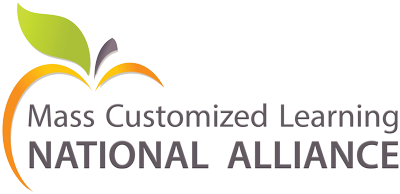Skip to content
The learning community has an appointed Leadership/Continuous Improvement Team
The staff has a common understanding of the Research on Effective School Cultures
The learning community has a District Mission, Vision, Guiding Principles, Learner Outcomes articulated through a Community Dialogue
The staff uses the Mission, Vision, Guiding Principles, Core Values, Learner Outcomes as a Decision-Making Screen
The staff operates as both Research AND Evidence Based
The staff uses Problem Solving and Invention Reasoning Strategies/Tools
The staff has a common understanding of the Research on Learning, Motivation and Engagement
The staff has a Growth Mindset (Efficacy) for themselves
The staff has a common understanding of Second Order versus First Order Change
The staff has a common understanding of the Rationale for and Vision of Mass Customized Learning
The learning community has changed the language to: Learners, Learning Facilitators, Learning Opportunities, Learning Community)
Learning Facilitators actively work toward achieving the Learning Community’s Customized Learning Vision
Learning Facilitators work toward creating the Ideal Learning Experience for all learners
The Learning Community has a common Model/Language/Taxonomy for Understanding Learning
Learning Facilitators emphasize and facilitate learning at high levels of cognition using a taxonomy of learning
Learning Facilitators, individually and in teams, reflect on the effectiveness of their strategies to meet the needs of learners
Learning Facilitators, individually and in teams, routinely adjust their strategies to meet the needs of learners
Learning Facilitators engage in team problem solving and planning to meet the needs of learners
Learning Facilitators have a Customized Learning Plan (CLP) with goals and strategies to improve their craft
Learning Facilitators are active social learners participating in face-to-face and online personal learning networks
Learning Facilitators routinely use technology to enable and enhance learning and instruction
Learning Facilitators have shifted to a focus from Activities/Assignments to Learning Goals/Outcomes
The Learning Community uses the Learning Outcomes (LOs) derived in the Strategic Design as the basis for the “curriculum”
The Learning Outcomes are organized in progressions of learning (versus according to grade levels or courses)
The Learning Outcomes include enabling Concepts Outcomes (know ), Thinking Skills Outcomes (do ), and Dispositions Outcomes (be like )
The Learning Community uses an explicit Model to communicate the Learning Outcomes to learners and parents
The LOs are categorized in a “how best learned” format (e.g. seminars, labs, online, mentorships, individual or group projects)
Those Learning Outcomes best learned online are put online
Learning facilitators create a culture of “voice and choice” for learners
Learning facilitators create a growth mindset/iteration culture for learners
Learners engage in various learning opportunities (e.g. seminars, labs, flipped lessons, online, mentorships, individual and group projects)
Learners meet with success as they work on challenging Learning Outcomes
Learners move through the Learning Outcomes at their own pace
Learners work on concepts and skills with content of interest to them
Learners work on concepts and skills using their most optimum style of learning
Learners receive immediate, formative, and productive feedback on their progress
Learning facilitators understand how learning data can create a culture of investment and engagement vs control and compliance
Evidences of learning are aligned to the learning community’s identified Learning Outcomes
The data from varied evidences of learning provide formative feedback to learners on their progress on their learning outcomes
The data from varied evidences of learning inform instruction and planning
Learners demonstrate their learning in various ways
Each learner establishes his/her own learning goals, monitors his/her progress, and adjusts his/her plan
Each learner is engaged and invested in his/her learning
Learners design their own evidences of learning
The learning community exemplifies a culture of inquiry and growth mindset
A robust and healthy technology infrastructure exists throughout the learning community
Stakeholders understand the importance of “1 to 1” access to technology within the Learning Community
The Learning Community has a Student Information System (SIS), a Learning Management System (LMS), and Scheduling Technology (ST) which are integrated and seamless
The Student Information System (SIS) houses, reports on, and uses demographical information
The Learning Management System (LMS) houses the Learning Outcomes, the Customized Learning Plan of each learner, learning objects and activities, evidence of learning, and instructional materials
The Learning Management System (LMS) allows for 24/7 access for learners, parents, and Learning Facilitators
The Learning Management System (LMS) responds to learner needs with and without intervention (friction free) from the LF
The Scheduling Technology (ST) allows for the flexible scheduling of learners into the needed Learning Opportunities (e.g. seminars, labs….)
Learning Facilitators routinely use their personal devices (e.g. laptop, iPad, tablet, Chromebook) to leverage learning and instruction
Each learner has a personal device to access and leverage their learning
Each learner has a Customized Learning Plan
Learners are assigned to Learning Coaches who manage their Customized Learning Plan (CLP)
Learning Outcomes are organized/clustered into modules (versus courses and textbooks as the organizer)
Learning Opportunities include seminars, labs, mentorships, online learning, individual and/or group projects (versus classes/courses)
Learning Opportunities are for a few weeks at a time (e.g. seminars, labs) or are on-going (e.g. mentorships, projects, online)
The schedule is flexible and responsive to the needs of learners
Anytime/anywhere learning is the norm and expectation (versus semesters and school year)
Grading is a feedback system separating academic and non-academic feedback (versus a rewards and punishment system)
Credentialing is based on evidence of learning the Learning Outcomes (versus seat time, GPA, or class rank)
The learning community adopts a formative/iterative approach to feedback (e.g. no averaging, no zeroes, do-overs are okay)
The learning community uses rubrics for reflection, feedback, and communicating progress (versus the 100 point scale or A, B, C . . . )
Learning facilitators collaborate with team members to share the targeted instruction
Groupings and regroupings of learners are frequent, flexible, and based on the needs of learners (versus tracking or age-based)
Teachers are organized and defined as Learning Facilitators for multiple Learning Outcomes (versus “Gr. 3 teacher” or “US History teacher”)
Go to Top

